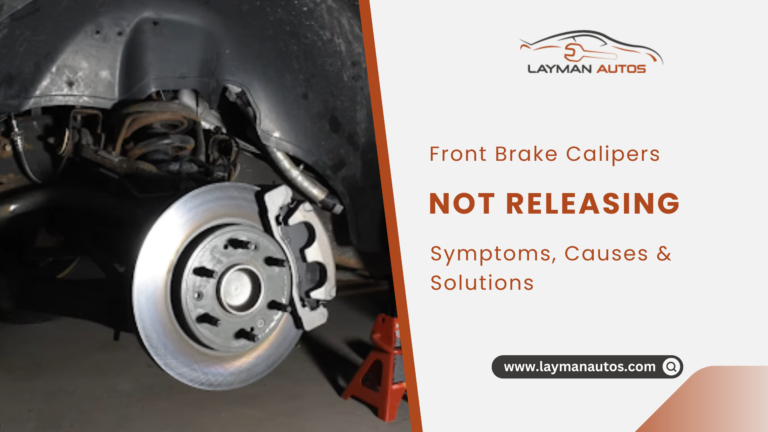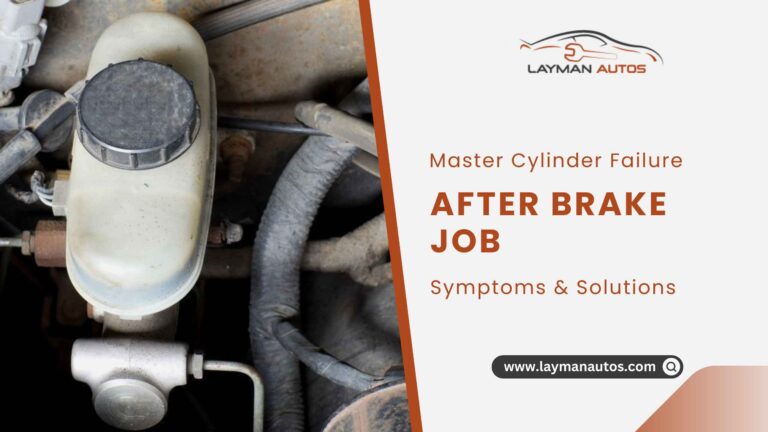What Happens if You Drive without Power Steering Fluid? Explained
Power steering fluid helps reduce the engine’s effort in turning the wheel by providing sufficient pressure on the steering system. The lubricant allows access to increased efficiency in rotating the steering wheel. What Happens if you Drive without Power Steering Fluid is the question every driver asks.
What happens when you forget to schedule a service for your car and have to travel for an emergency? In any case, if you run out of fluid, you may find your car immobile.
It is essential to be aware of the consequences of driving without power steering fluid and the indications of low fluid.
This article will cover the consequences of driving without power steering fluid. In addition, you will become acquainted with the leading causes and indications of low steering fluid, along with how to check the fluid guide.

What is a Power Steering Fluid?
Power steering fluid, similar to the other lubricants but different in purpose, is used in hydraulic power steering systems to allow the movement of wheels either left or right. The primary purpose of the fluid is to ensure the energy transfer from the reservoir pump to the steering components, such as the steering wheel, steering shaft, and gearbox.
The fluid applies hydraulic pressure to the power steering system and initiates wheel movement linked with the steering wheel. Furthermore, steering fluid allows you to have increased control and handling of the vehicle. What makes power steering fluid important?
- Lubricates the moveable steering components
- Protect the power steering pump and gear from rust
- Reduces foaming inside the steering system
What Happens if You Drive without Power Steering Fluid?
Suppose you run low on power steering fluid and do not carry a spare one. Do you think about the consequences of driving without a power steering fluid? You must not know that’s why you pay little attention to it.
Locked Steering Wheel
How can you drive when the steering wheel does not rotate? However, there are many reasons for a locked steering wheel, and one of them is low fluid or having no fluid at all. When you don’t inspect the standard level of the power steering fluid, it becomes evident that your steering wheel does not do anything for you in turning the wheel and accelerating it.
Wheels Become Stiff
Since there is a close relationship between the steering system and the car’s wheels, it is not a matter of turning the key into the ignition hole and turning the tires to enjoy a fearless ride; many components function together.
Power steering fluid is one of the lubrications that pressurize the system and reduce the engine’s power in turning the wheel. Suppose you have no fluid, and you are on the road. Unfortunately, the wheels become stiff due to the immobility of the steering column and rack and thus meet unavoidable dangers.
Damage to the Steering System
Remember, minor damages lead to major ones, and driving without power fluid is one of the minor damages you give to your power system. Running low on the fluid level may allow you to ride near the mechanic shop, but having no fluid will fall you into a pit of danger.
There are chances that various parts of the steering system, such as steering columns, shafts, and racks, will face immediate damage. Also, several pistons, valves, and hoses wear down.
Overheating
Can low-power steering fluid cause overheating? The car’s overheating problem is linked to the AC system and low levels of hydraulic fluids. The steering fluid triggers various components to not compensate for the excess heat – generated as a by-product of the combustion resulting in overheating.
Damaged Power Steering Pump
Fluid needs pressure to turn the wheels, and the power steering pump performs this role effortlessly. When you have no fluid, the pump will likely become dry and increase friction. The deterioration further increases when parts become heated. Also, when there is not enough power supply to the steering wheel, you cannot turn it and find difficulty pressing the brakes too.
Indications of Low-Power Steering Fluid
Power steering fluids do not run out independently without leaving some primary indications for you to ponder and resolve. If you cannot drive without fluid, avoid taking extreme turns either to the right or left.
Pro Tip: Replacing your power steering fluid removes all the potential causes, so get it topped up asap.
Immobile Steering Wheel
Low power steering fluid will increase your effort for turning the wheel. The first and foremost impact of the low fluid level is visible on the steering wheel. Also, you will put extra energy, or more than normal, into rotating it.
Strange Noises
A car making noise is the first sign of an imminently dangerous situation. Listen to it carefully and make assumptions from which part it is coming. When the power steering fluid becomes low, strange whining or screeching noises come from under the car’s hood.
Moreover, the noises become prominent when you turn the wheel, even at low speed. The primary reason behind the phenomenon is the air gets trapped inside the pump. It starts circulating along with the fluid.
Fluid Stains
The low level of the power steering fluid leaves fluid stains on the ground. The visibility of these stains on the ground may be due to the leaking hoses. However, you must check the source of the leaking by turning the steering wheel back and forth.
What Causes the Power Fluid to Run Out?
Since you have glanced at the primary consequences of driving without the power steering fluid, leave behind the primary reasons that cause the fluid to run out. The first thing that comes to mind while thinking about the low fluid level is leaking.
Let’s discuss which parts are prone to excess leaking and leave the pump with no fluid. Furthermore, how aged components affect the health of the steering fluid, which in turn deteriorates its functionality.
Contaminated Fluid
The indications of low power fluid send you a notification to look after the fluid level and its condition. The fluid changes its color not due to abnormality but due to overusing it. It is recommended to check the color of the fluid to get it replaced by a newer one.
Generally, the color of the fresh fluid is in the tones of pinkish and reddish. Over time, it changes into dark brown and eventually needs your attention for replacement when it produces a burnt smell.
Cracked Steering Hydraulic Hose
The power steering fluid leaks when the fluid reservoir faces a rupture. With a significant loss of fluid, the steering wheel either binds in one direction or stops doing its functions adequately.
Aged Components
The power steering wheel system consists of various components that turn the wheel. In addition, many seals, hoses, and O-rings wear out or lose their flexibility. In that case, you will not be able to protect the fluid from leaking.
Another yet unavoidable part is the steering pump. If it gets any hole by mistake, the fluid will run out and prove vulnerable to other components.
Loose Nuts
Various screws or nuts that hold the steering system together may provoke the fluid to leak. When you do not tighten them to their last edge, they remain loose and cause fluid spilling.
How to Check the Power Steering Fluid?
Checking power steering transmission fluid is the same as regular vehicle maintenance without interference from the car expert. You need to learn a few steps and you are good to go. Check the owner’s guide for checking at hot or cold, and proceed further with locating the reservoir.

Look For Reservoir
The power steering fluid reservoir is a clear container with a black cap. In addition, you will easily find it by reading the indication. Many containers have maximum or minimum marks imprinted outside. It should be above the minimum range.
Search for Dipstick
The steering fluid also has a dipstick similar to the oil dipstick. You must pull it out, wipe it with a clean towel and insert it again upto its length.
Estimate Fluid Level
The next step is to ensure the dipstick inside the reservoir to inspect the condition and the two levels marked by HOT or COLD. If the fluid appears pinkish and does not produce a burnt smell, do not change it.
Note: follow the manual while checking the fluid at hot or cold temperatures.
Final Thoughts
Power steering fluid is an essential component of the steering system. You should check it and refill it to avoid facing inconvenience. In this article, I have mentioned the answer to your query about what happens if you drive without a power steering fluid. You may also benefit from the section dealing with checking steering fluid.
Frequently Asked Questions
Do I Check Power Steering Fluid Hot or Cold?
To obtain a correct reading, check the power steering fluid when it is warm. You must start by parking the car on a level surface and running the engine until it reaches operating temperature. When checked with a dipstick, the warm fluid allows you to become conscious of its subsequent refilling.
Tip: Remember to turn off the engine during checking the fluid level.
How Long Does Power Steering Fluid Last?
The average life of power steering fluid in the covered distance is 40,000-80,000 miles. Also, the recommended range can vary depending on how you use your vehicle and when the aged fluid is replaced.
How Long can you Run Without Power Steering Fluid?
You can run without power steering fluid for up to 30 minutes. If you do not want your car’s components to reach their last stages, you can ensure refilling the steering fluid as soon as possible or covering about 30 feet distance.






